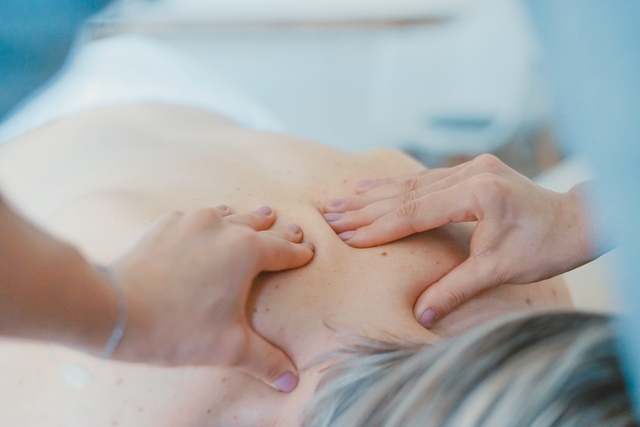There are many different types of physical therapy to choose from. Ask any professional athlete, and they’ll gladly tell you the name of their most trusted physical therapist.
The one who helped them recover after a debilitating injury or simply helped them prevent one with the proper preparation for their training and competitions.
Then talk to your elderly, but sedentary neighbor, and you might find out that they, too, have visited a local medical practitioner that specializes in this kind of therapy, and that they have become more physically independent due to their help.
It seems that physiotherapists are a true asset for anyone striving to lead a healthy life and increase their mobility as well as overall wellbeing.
However, when you’re in need of advice, guidance, or treatment, you want to go armed with knowledge and understanding of your possible solutions.
Here are a few of the most commonly used treatments that are often combined into a holistic healing approach depending on each person’s needs.
Learn More in our FREE Holistic Health Magazine What is Preventative Health Care and article on 10 Alternative Therapies Natural Health for Healing.
Acupuncture & Acupressure
These two ancient systems have been used to treat a wide variety of health issues, including the ones that are associated with physical injuries, trauma, and chronic pain.
Of course, their now widespread use spans well beyond the physical and into the realm of psychosomatic, metabolic, and mental issues such as anxiety, depression, allergies, and the like.
Acupuncture is, simply put, the use of thin needles to gently and painlessly puncture specific pressure points in your body.
It is primarily used as a way to relieve pain, and in physical therapy as an excellent complementary treatment for lower back pain, neck pain, and similar chronic pain issues.
Acupressure relies on the use of hands to apply pressure to those trigger points in your body associated with the illness or injury in question.
It’s often used as a complementary treatment for relieving pain, although it’s also used to relieve nausea, anxiety, and to boost sleep quality in patients. It is also just an example of types of physical therapy available.
All-Encompassing Rehabilitation
In countries where leading an active lifestyle is a predominant way of life, physiotherapists have found ways to perfect their healing systems and create unique treatments to enable their patients to restore their mobility and go back to their fitness passions.
For example, Australia is health and fitness embodied, so people there boast a wide range of rehabilitation centers that rely on a multitude of tried and tested manual and exercise-based techniques to help their patients.
You can easily find an expert physio in Castle Hill that provides preventative, corrective, and restorative treatments for sports injuries, accident-related injuries, as well as chronic pain and mobility management in illnesses such as arthritis.
In that sense, rehabilitation often involves guided training sessions with tailor-made exercises for that specific injury, as well as manual therapy, massages, and the like, so as to achieve a holistic effect that will benefit the whole body.
Water In The Service Of Your Body
In recent years, more people and physiotherapists have started using water-based activities in order to help their patients heal.
Called hydrotherapy, this system is indeed highly beneficial for sports injuries, recovery from accidents, and of course, ageing people with a range of mobility and pain issues.
Therapists use different water massagers, change water temperature, and other conditions in order to “tweak” the therapy for different issues.
Mildly warm water allows your entire body to relax, and it allows your joints a better range of movement so that your therapist can help you increase your mobility through targeted workouts and light stretches in the water.
Another great perk is that water offers light resistance during your exercise sessions, which allows your body to grow stronger in a safe and controlled environment.
Magnets As Healers
The magnetic field may not be visible to us, but its power has been harnessed to the benefit of our wellbeing through the use of magnets.
Our own electromagnetic field needs to achieve and maintain balance in order for our health to stay intact, so many practitioners use magnets in order to establish that balance and treat pain caused by injuries, illness, or accidents.
Magnets are typically paired with other forms of treatment such as massages, cold compression, exercises, and acupuncture.
They can be electrically charged or static, and you can discuss your options with your therapist depending on the severity and the type of issue you need to treat.
TENS Therapy
In addition to magnets, doctors and physios use electrical impulses to help your body heal. This is especially common for injuries and illnesses that produce chronic pain, which can be difficult to manage when we become less responsive to typical painkillers.
Transcutaneous electrical nerve stimulation, also known as TENS therapy, is the application of electrical impulses for reducing pain and helping in recovery.
TENS allows your body to produce more endorphins, also known as “happy hormones” and natural painkillers. It’s also used to relax muscles and reduce the pain signals in your body, so it’s an effective treatment for various forms of physical injuries.
Whenever you need help to treat a condition, physical therapy can be extremely beneficial, especially when it combines modern and traditional solutions into a holistic approach. Talk to your doctor about your options, and make sure you choose the best one for your needs.






